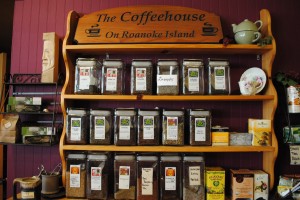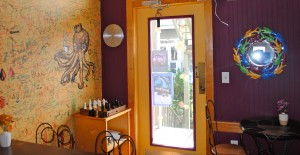This web site is the result of an ongoing Elon University class project for English 397, Writing as Inquiry, a course in Professional Writing and Rhetoric (PWR).
I chose Hwy 64 as the focus for this project because I think it represents something about North Carolina — something significant about its history and culture. Highway 64 is a marker in time, a link to a previous time. It was an interstate highway long before the concept of modern interstates had even entered our vocabulary. It traverses the state from the mountains to the sea, through several distinct geographical regions and climate zones. As my students discovered, North Carolina is a state of extreme regional diversity. From the small mountain towns nestled along winding roads, to the farming regions of the piedmont, to the industrial of the heartland, to the marshlands and barrier islands, our state holds a wealth of experiences for those willing to take the time to explore. Those who merely crisscross North Carolina north/south on I-77 or I-95, or east/west on I-85/40 will never really find these experiences. Those who simply commute back and forth on our primary arteries and loops around cities will not see the real state.
We spend far too much time roaring up and down crowded interstates, with white knuckles and tight stomachs, cell phones attached to our temples. There is little reason to notice scenery, because it is all the same. The stops along the way are so homogenized that unless there are distinct local signs, you often don’t know what town, or even what state you are in. Is this fast food burger place in Maryland, or am I in Georgia now?
However, when you get off onto these older highways like NC 64 you see the other America, a slower paced, more authentic slice of local culture. You will see in the articles that the student teams often felt out of place and even out of time during their research. In the areas where tourism is a key facet of the local economy, it was much easier to blend in and find folks willing to talk. But in parts of the state where non-locals are a rare sight, they often found themselves the center of attention.
My students of course did far more work for this project than is evident here. This was a course on research, so there were countless hours spent in the library and online studying their sections of the state. Before departing for their fieldwork they sent hundreds of emails and made dozens of phone calls. They took stacks of photos and interviewed, polled and surveyed local folks. Each group produced an impressive stack of field notes and drafts that become the article we have here.
I also have to give them credit for being willing to go along for this ride. Many college students these days, after years of high-stakes testing in the school systems, find it difficult to break out of that mode. Their comfort zone requires carefully explained units of study, with regular testing and quantitative scores the give them regular feedback on how they are doing. “Will this be on the exam?” “How many point is this worth?” Well, this project did not lend itself to such methods, what I often call “visible pedagogy.” And students today are very skilled at performing under these conditions and eager to critique the pedagogy if it doesn’t conform to their experience and expectations. I tend to practice a much more “invisible pedagogy”, as students who know me soon discover.
Students who work on this project are often uncomfortable, but rarely complain, and they usually gave far beyond what is simply required. I always look for the transformative quality in courses, and as each semester ends, I could certainly see how most of these students had indeed had such experiences. I thank them for their gumption and patience.
Michael Strickland
Elon University
mstrickl@elon.edu
Acknowledgments:
For the 2014 update of the Highway 64 website, we must give credit to a group of students who worked diligently to improve the site itself. Maria Reilova was our WordPress guru, in charge of all content placement, and Alex Pack served as our liaison to the IT folks who manage the technology. Gina Apperson was our page designer and developed the YouTube Channel. Rachel Weeks edited the Mountains sections, Will Guy edited the Foothills region sections, Beckah Porter edited the Piedmont sections, while Ciara Corcoran and Katrina Clifford polished up the content for the Coastal Plains sections. We thank them all for a job well done.



